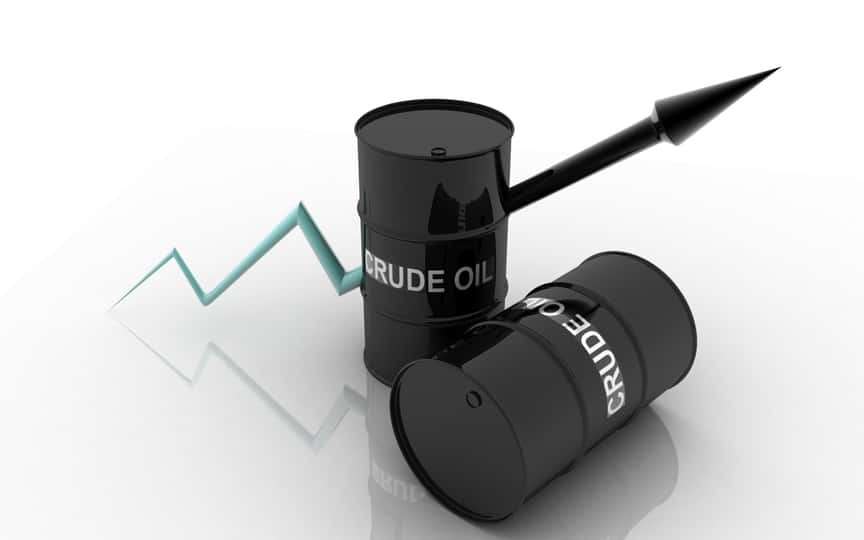The energy market is poised for growth, driven by rising oil prices, increasing demand for petrochemicals, and higher global incomes. Emerging markets in Asia are playing a key role in this expansion. As oil prices surge, energy companies, especially oil producers, stand to benefit from higher revenues.
In this environment, investors might want to keep an eye on top energy ETFs, such as iShares Global Energy ETF (IXC - Get Rating), Vanguard Energy Index Fund ETF Shares (VDE - Get Rating), and The Energy Select Sector SPDR Fund (XLE - Get Rating).
Despite weak economic data from China, Hurricane Francine disrupted the oil industry in September 2024, leading to higher oil prices due to halted production and supply concerns. This environment benefits companies with available production capacity. Additionally, supply disruptions have also driven up natural gas prices, creating broader opportunities in the energy market.
Meanwhile, speculation about potential Fed rate cuts could stimulate economic activity and increase oil demand, fostering an optimistic outlook for the energy market. Despite recent downward revisions in global oil demand, optimism persists due to strong growth in non-OECD countries and a rebound in OECD economies. This positive momentum could drive global oil demand beyond current expectations into 2025.
Furthermore, global oil demand is set to reach a record 103.10 million barrels per day in 2024, with oil prices projected to rise above $80 per barrel due to a growing supply deficit. Given this backdrop, let’s evaluate the three Energy Equities ETFs picks, starting with number three.
ETF #3: iShares Global Energy ETF (IXC - Get Rating)
IXC is an exchange-traded fund launched by BlackRock, Inc. It is managed by BlackRock Fund Advisors. The fund invests in the public equity markets of the global region. It invests in stocks of companies operating across the energy sectors, focusing on growth and value stocks of large-cap companies. It seeks to track the performance of the S&P Global 1200 Energy 4.5/22.5/45 Capped Index using a representative sampling technique.
With $1.99 billion in assets under management (AUM), IXC’s top holding is Exxon Mobil Corporation (XOM) with an 18.83% weighting, followed by Chevron Corporation (CVX), with a 9.04% weighting, and Shell Plc (SHEL), with 8.01%. It has a total of 53 holdings.
It has an expense ratio of 0.41%, lower than the category average of 0.47%. It currently has a NAV of $39.48. IXC’s fund outflows were $1.05 billion over the past six months.
The fund’s annual dividend of $1.53 yields 3.89% on the current share price. Its four-year average yield is 4.68%. Moreover, its dividend payouts have increased at a CAGR of 14.5% over the past three years and 4.8% over the past five years.
IXC has gained 2.2% year-to-date but declined 4.4% over the past year, closing the last trading session at $39.94.
IXC’s POWR Ratings reflect this uncertain outlook. The ETF’s overall C rating equates to a Neutral in our proprietary rating system. The POWR Ratings are calculated by considering 118 different factors, each weighted to an optimal degree.
IXC has a C grade for Peer and Trade. Of the 46 ETFs in the Energy Equities ETFs group, it is ranked #17. Click here to access all of IXC’s POWR Ratings.
ETF #2: Vanguard Energy Index Fund ETF Shares (VDE - Get Rating)
VDE is an exchange-traded fund launched and managed by The Vanguard Group, Inc. The fund invests in the public equity markets, focusing on stocks of companies operating across the energy sectors. It invests in growth and value stocks of companies with diversified market capitalizations. The fund seeks to track the performance of the MSCI US Investable Market Index (IMI)/Energy 25/50 using a full replication technique.
With $7.58 billion in AUM, the fund has a total of 114 holdings. VDE’s top holding is XOM with a 22.56% weighting, followed by CVX with a 13.58% weighting, and ConocoPhillips (COP) with 6.66%.
VDE has an expense ratio of 0.10%, lower than the category average of 0.47%. It currently has a NAV of $119.25. Its fund outflows came in at $402.08 million over the past year.
VDE’s annual dividend of $3.83 yields 3.21% on the current share price. Its four-year average yield is 3.65%. Likewise, the fund’s dividend payouts have increased at a CAGR of 15.3% over the past three years and 7.3% over the past five years.
VDE has gained 3% year-to-date; however, it declined 5.3% over the past six months, closing the last trading session at $120.84.
VDE’s bleak fundamentals are reflected in its POWR Ratings. The ETF has an overall rating of C, translating to a Neutral in our proprietary rating system.
It has a C grade for Peer and Trade. It is ranked #15 in the same group. To access all the POWR Ratings for VDE, click here.
ETF #1: The Energy Select Sector SPDR Fund (XLE - Get Rating)
XLE is an exchange-traded fund launched by State Street Global Advisors, Inc., and managed by SSGA Funds Management, Inc. It invests in the public equity markets of the United States, focusing on stocks of companies operating across the energy sectors. The fund targets growth and value stocks of companies with diversified market capitalizations. It seeks to track the performance of the Energy Select Sector Index using a full replication technique.
With $33.5 billion in assets under management (AUM), XLE’s top holding is XOM with a 23.84% weighting, followed by CVX, with a 16.89% weighting, and EOG Resources, Inc. (EOG), with 6.24%. XLE has a total of 24 holdings.
XLE has an expense ratio of 0.09%, higher than the category average of 0.47%. It currently has a NAV of $85.58. Its fund outflows came in at $1.48 billion over the past year.
The ETF pays an annual dividend of $2.92, which yields 3.38% on the current price. It has a four-year average dividend yield of 4.33%. Also, XLE’s dividend payouts have increased at a CAGR of 11.4% over the past three years and 6.5% over the past five years.
XLE has gained 3.3% year-to-date and declined 5.5% over the past six months, closing the last trading session at $86.57.
XLE’s POWR Ratings reflect its mixed prospects. The ETF’s overall A rating equates to a Strong Buy in our proprietary rating system.
XLE has a C grade for Peer and Trade. In the Energy Equities ETFs group, it is ranked #14. Click here to access all of XLE’s POWR Ratings.
What To Do Next?
43 year investment veteran, Steve Reitmeister, has just released his 2024 market outlook along with trading plan and top 11 picks for the year ahead.
Want More Great Investing Ideas?
XLE shares were trading at $87.46 per share on Tuesday afternoon, up $0.89 (+1.03%). Year-to-date, XLE has gained 6.01%, versus a 18.98% rise in the benchmark S&P 500 index during the same period.
About the Author: Abhishek Bhuyan

Abhishek embarked on his professional journey as a financial journalist due to his keen interest in discerning the fundamental factors that influence the future performance of financial instruments. More...
More Resources for the Stocks in this Article
| Ticker | POWR Rating | Industry Rank | Rank in Industry |
| XLE | Get Rating | Get Rating | Get Rating |
| VDE | Get Rating | Get Rating | Get Rating |
| IXC | Get Rating | Get Rating | Get Rating |






